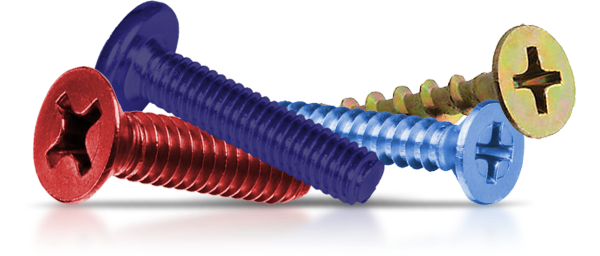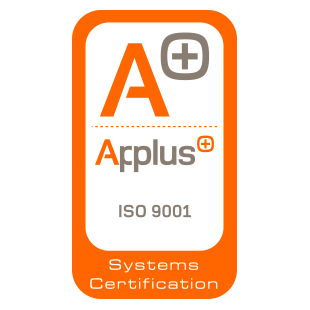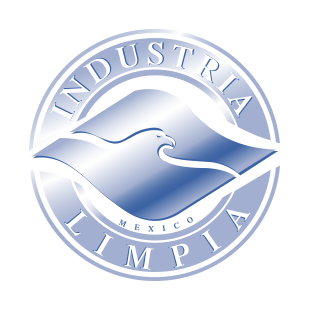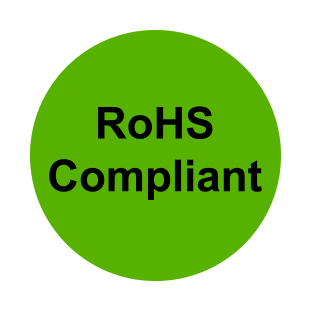Especificaciones de Acabado
| Procesos de Caberi, S.A. | Mil Spec | ASTM Spec |
|---|---|---|
| Cooper-Cobre | MIL-C-14550B | B 734 |
| Indium-Indio | ||
| Latonado-Brass | ||
| Nickel-Níquel | QQ-N-290A | |
| Passivate-Pasivado | QQ-P-35C | |
| Tin-Estaño | MIL-T-10727C | B 545 |
| Zinc | QQ-Z-325B | B 633 |
“Siempre atentos de manera rápida y eficiente a los requerimientos y necesidades de nuestros clientes”.
Military Plating Specifications
MIL-C-5541E
| Chemical Films | Mil Spec | Thickness | Comments |
|---|---|---|---|
| Coatings for aluminum. Color can vary colorless to golden – iridescent – brown, or can be dyed in specific colors. Materials should conform to MIL-C-81706. Coatings shall be continuous, free from powdery areas, breaks, scratches, etc. | No dimensional change | Class 1A is used as a corrosion preventative film (unpainted) or to prove adhesion of paint finish systems. Class 3 is used as a corrosion preventative film for electrical and electronic applications where low-resistance contacts are required. |
MIL-A-8625E
| Chromic Anodize | Mil Spec | Thickness | Comments |
|---|---|---|---|
| Color will vary from light gray to dark gray depending on alloy. Not as readily dyed as sulfuric anodize. New salt spray requirement is 336 hours (5% solution per method 811 of FED-STD-No. 151). Minimum weight for Type 1 Coatings Class1 200 milligrams/sq. ft. Class 2 500 milligrams/sq. ft. Because of thinness, will scratch easily. Can be used for inspection of aluminum forgings or casting by noting evidence of chromic acid bleed out from laps, cracks, seams, etc. | Type 1 Class 1 Class 2 | .00005-.0003” | Unless otherwise specified, coating will be sealed. Metal salt sealants should not be used on items that will be painted. Non-dyed (Natural, including dichromate sealing). Dyed. Shall not be applied to aluminum alloys with over 5.0% copper, 7.0% silicon, or totally alloying constituents over 7.5%. When copper content is less than 4.6% and for all suitable casting alloys, be sure aluminum is tempered (such as –T4 or –T6) |
MIL-C-14550B
| Copper | Mil Spec | Thickness | Comments |
|---|---|---|---|
| Copper in color and matte to a very shiny finish. Good corrosion resistance when used as undercoat. A number of copper processes are available, each designed for a specific purpose. Brightness (to eliminate the need for butting); High speed (for electroforming); Fine grain (to prevent case hardening); etc. | Class 0 Class 1 Class 2 Class 3 Class 4 | Unless otherwise specified .001-.005” .001” .0005” .0002” .0001” | For heat treatment stop-off For carburizing and decarburizing shield, also plated thorugh printed circuit boards. As an undercoat for nickel and other platings. To prevent basis metal migration into tin (prevents poisoning solderability). |
MIL-C-26074B
| Electroless Nickel | Mil Spec | Thickness | Comments |
|---|---|---|---|
| Similar to stainless steel in color. Plates uniformly in recesses and cavities (does not build up on edges). Corrosion resistance is good for coatings over .001” thickness. Electroless nickel is used extensively in salvage of mis-machines parts. Also, for inside dimensions and irregular shapes (where assembly tolerances need uniformity provided by “electroless” process). | Class 1 Class 2 Class 3 Grade A Grade B | Unless otherwise specified .001” .0005” | As coated. Steel, copper, nickel, and cobalt base alloys. Heat treated after plating. Aluminum alloys other than alloy 7075. Heat treated after plating. Minimum thickness. For iron and aluminum based alloys. Minimum tickness. For copper, nickel, and cobalt based alloys. |
MIL-G-45204C
| Gold | Mil Spec | Thickness | Comments |
|---|---|---|---|
| Yellow to orange color depending on proprietary process used. Will range from matte to bright finish depending on basis metal. Good corrosion resistance and has high tarnish resistance. Provides a low contact resistance and is a good conductor. Has excellent solderability. | Type I Type II Type III Class 00 Class 0 Class 1 Class 2 Class 3 Class 4 Class 5 Class 6 | Unless otherwise specified .00002” min. .00003” min. .00005” min. .00010” min. .00020” min. .00030” min. .00050” min. .00150” min. | 99.7% gold min. 95.5% gold min. 99.9% gold min. Grade A 90 knoop max Grade B 91-129 knoop Grade C 130-200 knoop Grade D 201 knoop and over Type I (Grades A, B or C) Type II (Grades B, C, or D) Type III (Grade A only) |
MIL-A-8625E
| Hard Anodize | Mil Spec | Thickness | Comments |
|---|---|---|---|
| Color will vary from light tan to black depending on alloy and thickness. Can be dyed in darker colors depending on thickness. Coating PENETRATES base metal as much as builds up on the surface. Ther term THICKNESS includes both the buildup and penetration. Provides very hard ceramic type coating. Abrasion resistance will vary with alloy and thickness of coating. Good dielectric properties. Corrosion resistance is good but recommend seal hard anodize in 5% dichromate solutions where increased corrosion resistance is required. Where extreme abrasion resistance is required do not seal as some softening is encountered. | Type III Class 1 Class 2 | As specified on drawing. | Most aluminum alloys depening on process used. Where maximum serviceability or special properties are required, consult metal finsiher for best alloy choice. Thick coatings (over .004”) will tend to break down sharp edges. Typical applications: hydraulic cylinders, wear surfaces, actuating cams, etc. Can be used as an electrical insulation coating. “Flash” hard anodize may be used instead of conventional anodize for corrosion resistance and may be more economical in conjunction with other hard anodized areas. Non-dyed. Dyed |
QQ-N-290A
| Nickel | Mil Spec | Thickness | Comments |
|---|---|---|---|
| There is a nickel finish for almost any need. Nickel can be deposited soft or hard – dull or bright, depending on process used and conditions employed in plating. Thus, hardness can range from 150-500 Vickers. Can be similar to stainless steel in color, or can be a dull grey or light grey (almost white) color. Corrosion resistance is a function of thickness. Has a low coefficient of thermal expansion – is magnetic. All steel parts having a hardness of Rc-40 or greater require a post back at 375° ±25°F. | Class1 Type I Type II Type III Type IV Type V Type VI Type VII Type VIII Type IX Type C Class 2 | Total thickness of copper and nickel .002” min. .00125” min .00075” min. .00040” min. .00050” min. .00030” min. .00010” min. .00125” min. .00075” min. .00050” min. | NOTE: All steel parts having a tensile strength of 200,000 or greater shall not be nickel plated without specific approval of procuring agency. For decorative applications on: Steel base; Steel base; Steel base; Steel base; Copper base; Copper base; Copper base; Zinc base; Zinc base; Zinc base; For engineering applications type of nickel (process) should be called out. For salvage and where good hardness and corrosion req. |
QQ-P-35C
| Passivate | Mil Spec | Thickness | Comments |
|---|---|---|---|
| A process designed to remove foreign metals from the surface of stainless and corrosion resistant steels and to promote natural tendency of surface to oxidize. Does not change the appearance of the base metal. Process purifies surface and therefore improves corrosion resistance. | Type I Type II Type III Type IV Type V Type VI | No dimensional change | Low temperature. Medium temperature. High temperature. For steels containing large amounts (0.15%) or sulfur or selenium. Anodic – For high carbon martensitic (440) steels. Low temperature (optional) |
MIL-DTL-16232G
| Phosphate Coating Heavy | Mil Spec | Thickness | Comments |
|---|---|---|---|
| Coating for medium and low alloy steels. The phosphate coating will be uniform in texture, evenly deposited and can be grey to black in color. Provides moderate corrosion resistance and prevents wear. Reference Material DOD-P-16232 | Type Z Class 1 Class 2 Class 3 Class 4 Type M Class 1 Class 2 Class 3 Class 4 | .0002-.0006” | Zinc phosphate base coating (1000 mill-gms/ft2) Supplementary preservative treatment or coating, as specified. Supplementary treatment with preservative conforming to MIL-PRF-16173, Grade 3 or MIL-PRF-3150. No supplementary treatment Chemically converted (may be dyed to color as specified) with no supplementary coating or coating as specified . Manganese Phosphate Base Supplementary preservative treatment or coating, as specified. Supplementary treatment with lubricating oil conforming to MIL-PRF-16173, Grade 3 or MIL-PRF-3150. No supplementary treatment. Chemically converted (may be dyed to color as specified) with no supplementary coating or coating as specified. |
MIL-A-8625E
| Sulfuric Anodize | Mil Spec | Thickness | Comments |
|---|---|---|---|
| Color will vary with alloy. Aluminum will low alloying elements will show practically no color change. Best coating on aluminum for dyeing. Can be died practically any color or shade (black, blue, red, etc.). Salt spray requirement is 336 hours (5% solution per method 811 of FED-STD-No. 151). Minimum weight for Type II coatings: Class 1 600 Milligrams/sq. ft. Class 2 2500 Millgrams/sq. ft | Type II Class 1 Class 2 | .00005-.0010” | All aluminum alloys, but do not use where solution will entrap. FED-STD-No. 595 may be used as a Guide for specifying color (approximate comparison only). Non-dyed Dyed |
QQ-S-365C
| Silver | Mil Spec | Thickness | Comments |
|---|---|---|---|
| White matte to very bright in appearance. Good corrosion resistance, depending on base metal. Will tarnish easily. Hardness varies from about 90 Brinnell to about 135 Brinnell depending on process and plating conditions. Solderability is excellent, but decreases with age. Best electrical conductor. Has excellent lubricity and smear characteristics for anti-galling uses on static seals, bushings, etc. | Type I Type II Type III Grade A Grade B | .0005” min. unless otherwise specified. | unless otherwise specified. Increasing use in both decorative and engineering fields, including electrical and electronic fields. Matte Semi-bright Bright. Chromate post-treatment to improive tarnish resistance. No chromate treatment. |
MIL-T-10727C
| Tin | Mil Spec | Thickness | Comments |
|---|---|---|---|
| Color is gray-white in a plated condition. Soft, but is very ductile. Corrosion resistance is good (Coated items should meet 24 hour 20% salt spray requirement). Solderability is excellent. Tin is not good for low temperature applications (changes structure and loses adhesion when exposed to temperatures below –40 degrees F). If a bright finish is desired to be used in lieu of fused tin, specify Bright Tin plate. Thickness can exceed that of fused tin and deposit shows excellent corrosion resistance and solderability. | Type I Type II | As specified on drawing. Thickness Guide (not part of Spec.) .001-.00025” .0002-.0004” .0003” min. .0002-.0006” | Electrodeposited Hot dipped. Flash for soldering. To prevent galling and seizing. Where corrosion resistance is important. To prevent formation of case during nitriding. |
QQ-Z-325B
| Zinc | Mil Spec | Thickness | Comments |
|---|---|---|---|
| Either a bright or dull finish is acceptable. Bright Zinc plating closely resembles bright chromium. Zinc coated steel will not rust even when exposed by scratches because of the galvanic protection of the zinc. On weathering, zinc turns to a drab gray color. Zinc should be deposited directly on the base metal (Nickel is permissible undercoat if base metal is a corrosion resisting steel). Parts having a hardness greater than Rc-40 must be given a heat treatment prior to plating. Springs having a hardness over Rc-40 must be given an after plating baking at 375°-25°F for 3 hours. | Class 1 Class 2 Class 3 Type I Type II Type III | .0010” .00050” .00020” | The primary use of chromate finishes on zinc is to retard or prevent formation of white corrosion products on zinc surfaces. The primary purpose of phosphate coating on zinc is to provide a paint base. Without supplementary treatments With supplementary chromate treatment With supplementary phosphate treatment. |
ASTM Plating Specifications
ASTM Designation: B 733
(Electroless) Nickel-Phosphorus Coatings
The performance of the autocatalytic nickel coating depends to a large extent on the surface finish of the article to be plated and how it was pretreated. Rough, non uniform surfaces require thicker coatings than smooth surfaces to achieve maximum corrosion resistance and minimum porosity.
Table 1 Deposit Alloy Types
| Type | Phosphorus % wt. |
|---|---|
| I | No Requirement for Phosphorus |
| II | 1 to 3 |
| III | 2 to 4 |
| IV | 5 to 9 |
| V | 10 and above |
Table 2 Service Conditions Coating Thickness Requirements
| Service Condition | Minimum Coating Thickness Specification | µM | In. |
|---|---|---|---|
| SC0 | Minimum Thickness | 0.1 | 0.000004 |
| SC1 | Light Service | 5 | 0.0002 |
| SC2 | Mild Service | 13 | 0.0005 |
| SC3 | Moderate Service | 25 | 0.001 |
| SC4 | Severe Service | 75 | 0.003 |
4.3 Post Heat Treatment Class – The nickel-phosphorus coatings shall be classified by heat treatment after plating to increase coating adhesion and or hardness.
4.3.1 Class I – As deposited, no heat treatment.
4.3.2 Class 2 – Heat treatment at 260 to 400°C to produce a minimum hardness of 850 HK100.
4.3.3 Class 3 – Heat treatment at 280 to 200°C for 2 to 4 h to improve coating adhesion on steel and to provide for hydrogen embrittlement relief.
4.3.4 Class 4 – Heat treatment at 140 to 150°C for at least 1 h to improve coating adhesion for aluminum, non age-hardened aluminum alloys, copper, copper alloys and beryllium.
ASTM Designation: B 734
Electrodeposited Copper for Engineering Uses
Classification
The electrodeposited copper is classified according to thickness of the electrodeposit in the following table:
| Class | Minimum Thickness, µM |
|---|---|
| 25 | 25 |
| 20 | 20 |
| 12 | 12 |
| 5 | 5 |
| X | Thickness specified |
ASTM Designation: B 449
Chromates on Aluminum
Classification of Chromate Coatings
| Class* | Appearance | Coating Mass per Unit Area, g/m2 | Corrosion Protection |
|---|---|---|---|
| 1 | Yellow to brown | 0.4 to 2 | Maximum corrosion resistance generally used as final finish |
| 2 | Colorless to yellow | 0.1 to 0.4 | Moderate corrosion resistance, used as a paint base and for bonding to rubber. |
| 3 | Colorless | <0.1 | Decorative, slight corrosion resistance, low electrical contact resistance. |
| 4 | Light green to green | 0.2 to 5 | Moderate corrosion resistance, used as a paint base and for bonding to rubber |
* No relationship exists between class numbers and degree of corrosion resistance. Class numbers have been assigned on the basis of traditional usage and for compatibility with national standards.
ASTM Designation: B 634
Electrodeposited Coatings of Rhodium
Classification
Electrodeposited coatings for rhodium (thickness) are classified as follows:
| Class* | Appearance | Coating Mass per Unit Area, g/m2 | Corrosion Protection |
|---|---|---|---|
| 1 | Yellow to brown | 0.4 to 2 | Maximum corrosion resistance generally used as final finish |
| 2 | Colorless to yellow | 0.1 to 0.4 | Moderate corrosion resistance, used as a paint base and for bonding to rubber. |
| 3 | Colorless | <0.1 | Decorative, slight corrosion resistance, low electrical contact resistance. |
| 4 | Light green to green | 0.2 to 5 | Moderate corrosion resistance, used as a paint base and for bonding to rubber |
Typical Applications for Electrodeposited Rhodium
| Application | Thickness Requirement, µM |
|---|---|
| Reflectors, Tarnish Resistance | 0.05 to 0.25 |
| Light duty electrical contacts | 0.25 to 0.8 |
| Corrosion protection (mild) | 0.25 |
| Severe corrosion conditions | 2.5 |
| Severe wear electrical contacts | 1 to 2.5 |
| Special applications | To 6.25 |
ASTM Designation: B 700
Electrodeposited Coatings of Silver for Engineering Use
Classification
Purity:
Type 1 – 99.9% min.
Type 2 – 99.0% min.
Type 3 – 98.0% min.
Surface Appearance
Grade A, Mat – Electrodeposits without luster.
Grade B, Bright – Electrodeposits obtained by the use of brighteners in the electroplating bath.
Grade C, Bright – Mechanical or chemical polishing of Grade A silver coatings.
Grade D, Semibright – The use of addition agents in the electroplating bath.
Supplementary Surface Treatment – Specify by Class in letter code as follows:
Class N – No supplementary tarnish treatment
Class S – Supplementary tarnish treatment – not suitable for food service applications.
| Application | Thickness, µM |
|---|---|
Application Thickness, µM For short-term life solderability | 1 |
| For contact connectors having limited wear | 2.5 |
| Thickness for thermocompression bonding and nominal thickness for domestic hollowware. | 5 |
| Hotel quality flatware, and suggested thickness for thermocompression bonding and die attachment for semiconductors | 10 |
| High quality European hotel flatware and hollowware | 20 |
| Applications where very severe wear resistance is required, such as machine bearings and for high-quality flatware. | Greater than or equal to 40 |
ASTM Designation: B 488
Electrodeposited Coatings of Gold
Purity
| Mass Percent Gold, Minimum | ASTM Type | MIL-G-45204 |
|---|---|---|
| 99.90 | 1 | III |
| 99.70 | 2 | I |
| 99.00 | 3 | II |
Hardness
| Knoop Hardness Range | ASTM Type | MIL-G-45204 |
|---|---|---|
| 90 HK25 maximum | A | A |
| 91-129 HK25 | … | B |
| 90-200 HD25 | B | … |
| 130-200 HK25 | C | C |
| >200 HK25 | D | D |
Relationship between Purity and Hardnes
| ASTM | Code |
|---|---|
| I | A, B and C |
| II | B, C and D |
| III | A only |
ASTM Designation: B 545
Electrodeposited Coatings of Tin
| Class | Minimum Thickness | Typical Applications |
|---|---|---|
| A | 2.5 µm (100 µin) | Mild service conditions, particularly where the significant surface is shielded from the atmosphere (as in electronic connector housings.) |
| B | 5 µm (200 µin) | Mild service conditions with less sever requirements than Class C. |
| C | 8 µm (320 µin) 10 µm (400 µin) for steel substrates | Moderate exposure conditions, usually indoors, but more severe than Class B. |
| D | 8 µm (320 µin) 10 µm (400 µin) for steel substrates | Severe service, including exposure to dampness and mild corrosion from moderate industrial environments. |
| E | 30 µm (0.0012 in) | Very severe service conditions, including elevated temperatures, where underlying metal diffusion and intermetallic formation processes are accelerated. |
| F | 1.5 µm (60 µin.) | Similar to Class A, but for shorter-term contact applications and short shelf-life requirements, subject to purchaser approval. |
Surface Appearance Type (Electroplating Process)
Matte Tin Electrodeposits – Coating with a matte appearance are obtained from tin plating baths (stannate, sulfate, methylsulfonate, and fluoborate) used without the addition of brightening agents.
Bright Tin Electrodeposits – Bright coatings are obtained when proprietary brightening agents are used in specific bright tin plating baths.
Flow-Brightened Electrodeposits – Flow –brightened coatings are obtained by heating the matte coating above the melting point of tin for a few seconds, followed by quenching.
ASTM Designation: B 580
Anodic Oxide Coatings on Aluminum
Anodic Coatings Descriptions
NOTE: Hard coatings may vary in thickness from 12 µm to more than 100 µm. If the thickness of Type A is not specified it shall be 50 µm min. Type A coatings will not be sealed unless so specified.
| Type | Coating | Minimum Fil Thickness (µm) |
|---|---|---|
| A | Engineering Hard Coat | 50 |
| B | Architectural Class I | 18 |
| C | Architectural Class II | 10 |
| D | Automotive – Exterior | 8 |
| E | Interior – Moderate Abrasion | 5 |
| F | Interior – Limited Abrasion | 3 |
| G | Chromic Acid | 1 |
Definition of Service Conditions and Examples of Typical Applications and Applicable Coating Types
| SC No | Definition | Typical Applications | Applicable Coating Types |
|---|---|---|---|
| Very Severe (5) | Exposure to atmospheric weathering that can be expected to extend for many years or to prolonged high bearing load wear conditions. | Unmaintained exterior architectural facades, machinery parts, marine | A and B |
| Severe (4) | Exposure that includes likely damage from denting, scratching, and abrasive wear coupled with corrosive environments | 1-Automotive – exterior, 2-maintained architectural exterior facades, windows | C and D |
| Moderate (3) | Exposure that is likely to include occasional wetting with coating subject to moderate wear or abrasion. | Lighting reflectors – exterior, athletic equipment, appliances, nameplates, lawn furniture | E |
| Mild (2) | Exposure indoors in normally dry atmospheres with coating subject to minimum wear of abrasion. | Automotive – interior, houseware items, lighting reflectors – enclosed. | F |
| Crevice Condition (1) | Exposure to humid atmospheres with little or not abrasive conditions. Particularly for lap joints. | Spot-welded or reviteed assemblies such as aircraft and electronic components. | G |
ASTM Designation: B 633
Electrodeposited Coatings of Zinc on Iron and Steel
Classification
| Type | Description |
|---|---|
| I | As-plated without supplementary treatment |
| II | With colored chromate conversion coatings |
| III | With colorless chromate conversion coatings |
| IV | With phosphate conversion coatings |
Thickness Classes for Coatings
Classification* Number and Conversion Coating Suffix | Service Condition** | Thickness, Min µm |
|---|---|---|
| Fe/Zn 5 | SC 4 (very severe) | 25 |
| Fe/Zn 12 | SC 3 (severe) | 12 |
| Fe/Zn 8 | SC 2 (moderate) | 8 |
| Fe/Zn 5 | SC 1 (mild) | 5 |
* Iron or steel with zinc electroplate. Numeral indicates thickness in micrometres.
** Where service conditions are valid only for coatings with chromate conversion coating. Type II for SC 4 and SC 3 and Type III for SC 2 and Sc 1.
| TypesSuffix | Test Period, h |
|---|---|
| II | 96 |
| III | 12 |
Examples of appropriate service conditions and description of service conditions
SC 4 – Very Severe: Exposure to harsh conditions, or subject to frequent exposure to moisture, cleaners, and saline solutions, plus likely damage by denting, scratching, or abrasive wear. Examples are: plumbing fixtures, pole line hardware.
SC 3 – Severe: Exposure to condensation, perspiration, infrequent wetting by rain, and cleaners. Examples are: tubular furniture, insect screens, window fittings, builder’s hardware, military hardware, washing machine parts, bicycle parts.
SC 2- Moderate: Exposure mostly to dry indoor atmospheres but subject to occasional condensation, wear, or abrasion. Examples are: tools, zippers, pull shelves, machine parts.
SC 1 – Mild: Exposure to indoor atmospheres with rare condensation and subject to minimum wear or abrasion. Examples are: button, wire goods, fasteners.
